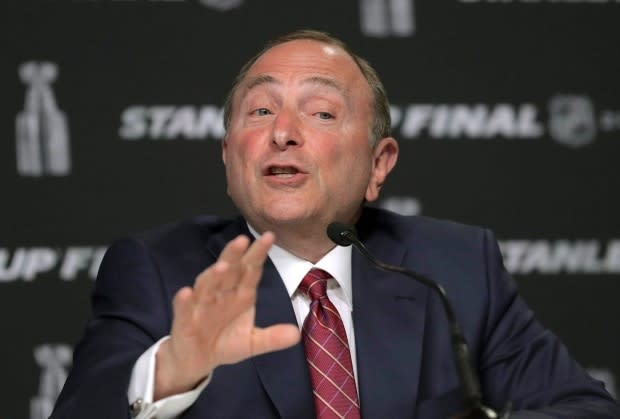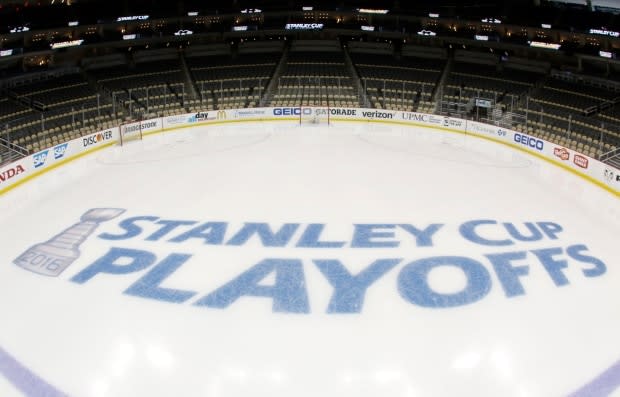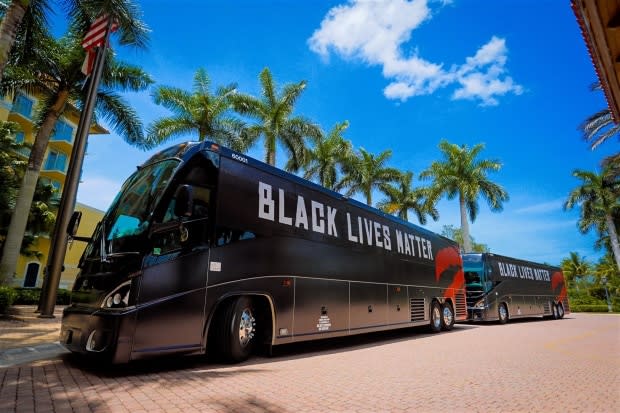Game on: To stem financial losses, the NHL and other pro sports leagues prepare to resume play amid COVID-19

With the NHL lurching back into competition, players and staff alike are trying to strike a delicate balance. Yes, it feels good to see players in competition. And it will give many fans something to cheer for during a difficult time. But above all, this was a financial decision. Just maybe not the kind you're thinking of.
"It's totally just trying to minimize loss," said Moshe Lander, a senior economics lecturer at Concordia University in Montreal.
He said professional sports leagues around the world aren't pushing to get back into action to make money. Rather, he said, they're doing everything possible to limit heavy losses.
He adds up the games played over the course of a normal NHL playoff run: eight first round series, four second round, two third round and then the Stanley Cup final. In all, 15 series of best of seven games
"You're talking 75-90 games," said Lander. "Each arena sits 15,000-20,000 people. You take 90 games of 20,000 people, that's 1.8 million (people) that pass through the gates."
Teams are set to lose $150 million to $200 million in ticket sales alone this postseason, even if play does resume as planned. And that doesn't even consider concessions or merchandise.
TV rights and sponsorship
The losses won't stop there.
"For the league, it's about the inventory," said former player and broadcaster Nick Kypreos.
Kypreos was one of the biggest names at Sportsnet when the network spent $12 billion to buy the rights to broadcast NHL games in Canada. Now, he's host of The RealKyper at Noon streamed by the sports betting company Line Movement.

He said broadcasters paid big money to the NHL for content. That was all thrown into turmoil when the league shut down in March.
"That's a lot of games, a lot of advertising, a lot of sponsorship money," said Kypreos. "If [NHL Commissioner] Gary Bettman and the league don't get those games back in, he's gonna owe SportsNet and NBC a lot."
If the league doesn't deliver the promised content to broadcasters, there will be a debt to pay. It's unclear what that will look like or how much it will amount to.
So, the pressure to finish this season was clear. But Kypreos said this season will set off a series of dominoes that could swamp the teams, the league and the players.
"Guess who 50 per cent of the partner is? The players," he said of the way labour contracts between players and teams are organized.
"If those games don't get played, [the players are] on the hook for 50 per cent of the revenue."

Spreading the financial pain
The NHL's collective bargaining agreement is a predictably complicated affair. What matters here is what the league calls "escrow." The teams and the players split hockey related revenue 50/50.
Over the year, players put money aside in an escrow account to make sure they have funds available to pay back the league if player salaries total more than club revenues.
If this season had collapsed and no games were played, some expected escrow to rise as high as 60 per cent — in other words, players would have had to kick back more than half of their salaries next year. The league's salary cap would also have taken an immediate, serious hit.
"Players aren't playing because they want to," said Kypreos. "They're playing because they have to."
So, the NHL and the players' association held a fevered series of meetings to hash out the reopening deal announced earlier this month. They agreed on a return to play protocol and extended the collective bargaining agreement for four more years.
"It was a recognition by both sides that we were being confronted with an incredibly difficult and unprecedented situation," Bettman told reporters after the deal was announced.
"And that to get through it, for the good of our constituents and good of the game, and for the good of our fans, we needed to work together."

Experts say finding a way to share the burden was key.
"Let's stop the bleeding, and let's share the bleeding," said Gord Stellick, former GM of the Toronto Maple Leafs and assistant GM with the New York Rangers. He's now a broadcaster and analyst with SportsNet.
He said the new collective bargaining agreement saved everyone from much deeper losses than they would have experienced.
"It would have been chaos in many ways," he said.
Different leagues, similar problems
That potential for chaos is not unique to the NHL. Every major sports league is scrambling right now. Major League Baseball is still trying to salvage its own deal to return to play.
Both the NBA and Major League Soccer are readying to resume their seasons sequestered inside Walt Disney World as the case load soars around them in Florida. Star players in both leagues have tested positive for COVID-19 and two MLS teams have already been forced to withdraw from the tournament.
There are no guarantees that any of the leagues will actually pull this off; just trying is going to cost them a lot. Housing the teams and support staff will come with an enormous bill. Meals, medical tests and transportation will cost yet more.
ESPN reported that the NBA's resumption plan alone will cost more than $150 million. The best-case scenario from this situation: playing the least profitable season in modern professional sports history.

Stellick said the return to play is a clear financial decision, but that doesn't mean it's not also going to be a moment of symbolism and coming together during a rough time.
"I look at what sports can do," he said. "Whether it's [then U.S. president] George W. Bush throwing out the first pitch [after 9/11], the Super Bowl after operation Desert Storm, Roberto Luongo in Florida after the Parkland shooting," he said sports can play an enormous role in bringing people together.
The last four months have been tough on everyone, Stellick said and there's still a lot of uncertainty. But he said getting players safely back to the ice can show everyone things can still work — things can still get done.
"Just the positive thing here, in the sunshine, let's try to make things work where we can."
Hockey won't change the horrors of the last 17 weeks. It won't save the economy. And sure, it will be odd to watch playoff hockey in August. But it just may feel like the first normal thing a lot of people have done in a long time.

 Yahoo Sports
Yahoo Sports 